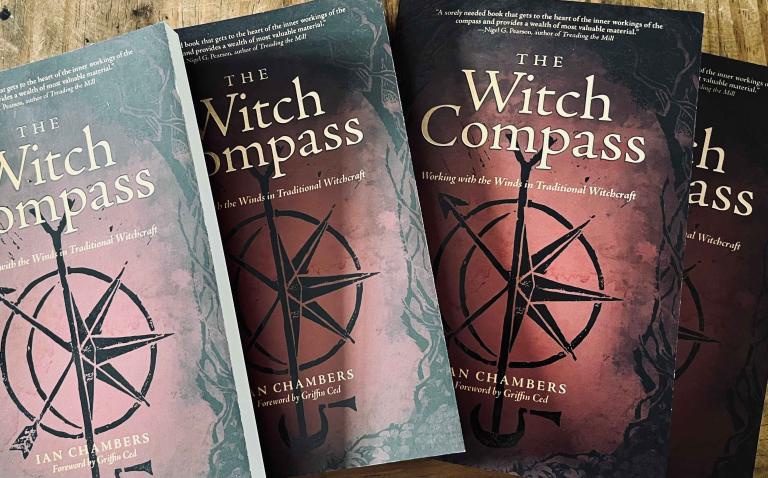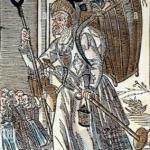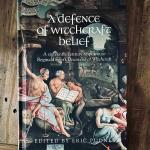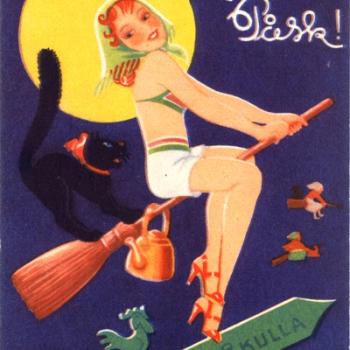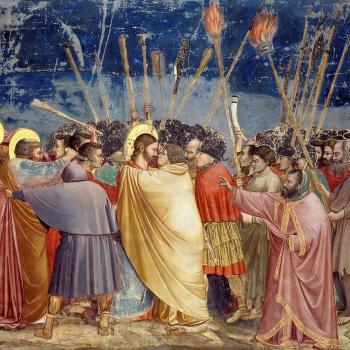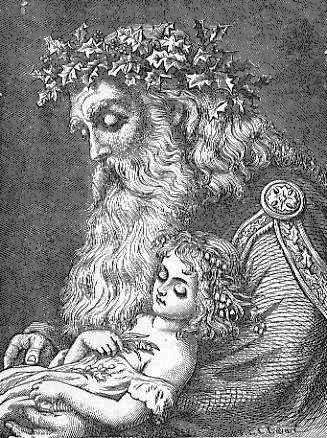
veritas filia temporis
The Midwinter, especially around the solstitial event of the sun’s apparent stasis (around the 21st/22nd December), has long held significance for mankind. As humanity developed narrative to bring order and meaning to life’s ever turning wheel, so myth developed around this dark time of the year — winter in the northern hemisphere. It is, therefore, little coincidence that codified within our current apprehension of custom and tradition at this time is a dark robed figure, with sickle or scythe, bearing the hourglass of time and the appearance of Saturn or Chronos.
As the sun is suspended in darkness’ pregnant pause, stillness grips the land between the dying of the old and the emergence of the new. Held betwixt this fractious tension, between temporality and eternity, timelessness renews time just as the Light emanates anew from the yawning maw of blackened Night. The Saturnian shadow of Father Time turns the hourglass, facing two ways as Janus the night watchman of the boreal portal.
A great many of our European traditions surrounding Christmas and the end of December inherit from the Roman syncretic festivals of the time. Especial among these is the Saturnalia, which takes its name from the Roman deity Saturn. This Romanised deity form owes a lot to lore adopted from the Hellenic world who, by the time of Rome’s pinnacle, had merged with the concept of time in many respects. The broad, sweeping scythe now associated with death represents the generalised harvest of souls over the Earth, while the sickle is more precise and individualised, more considered and particular. As the cold, black winters of the past were often foreboding times, with seasonal weather and prolonged darkness bringing closer the shadow of death, people have been minded to reflect upon their mortality.
It seems fitting, then, that midwinter is the closest point to the dark chaos, the black emptiness of timeless keeping from whence the light is born into the world of temporal space. The dark night is the prenatal condition of creation, the womb from whence the light breaks and immediately makes manifest, illuminating the emptiness and thereby filling it. Creation myths are replete with the origins of the universe from the gaping chaos before time. From the friction generated between darkness and light, being and non-being, is born all in a continuum bound in time, and bestowed by eternity.
The midwinter, then, proffers a crack between the sheets of night, where darkness and light are neither in ascendancy nor abatement but held in abeyance, suspended as lovers or combatants locked in a moment betwixt. This most holy of domains accords with cosmologies the world over and affords an opportunity to witness the dying and creation cycle in a mythic landscape made available for the briefest of moments
Our cultures are filled with mythic representations, symbols and allegory, art and word to convey this essential mystery. However, ancient peoples innately understood and apprehended the majesty of this moment, reflected in their complex and profound narratives orally, then literally, passed on. Within our heart, this truth lives too, unencumbered by the trappings of our culture or societal dressings. These adornments are nice additions, the raiments of centuries of accumulated custom or tradition, which are nevertheless unable to fully impart the truth born at this time. Therefore, in art and literature, Father Time is related to the idea that time is the father of Truth (veritas filia temporis).
- Ring out, wild bells, to the wild sky,
- The flying cloud, the frosty light:
- The year is dying in the night;
- Ring out, wild bells, and let him die.
- Ring out the old, ring in the new,
- Ring, happy bells, across the snow:
- The year is going, let him go;
- Ring out the false, ring in the true.
- — Ring Out, Wild Bells, poem by Alfred, Lord Tennyson, Published in 1850.
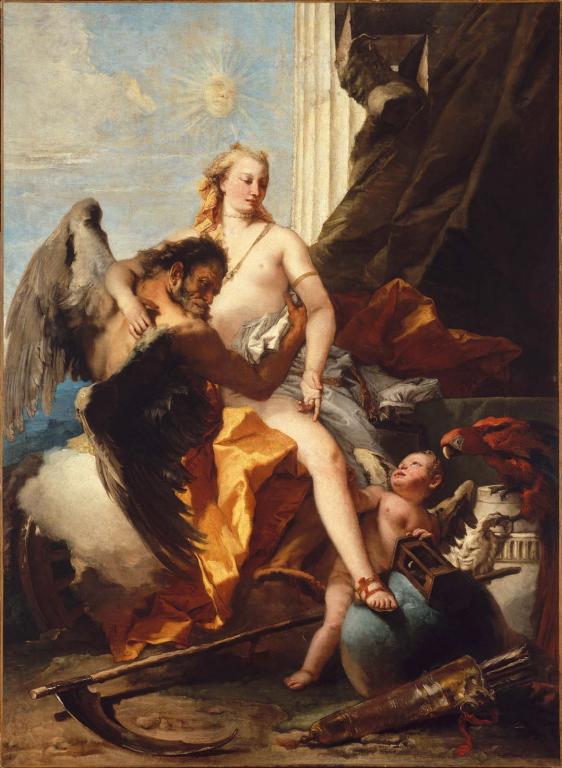
The Witch Compass: Working with the Winds in Traditional Witchcraft
The Witch Compass is Ian Chambers’ first book, published in 2022 with Llewellyn, and is available through all good booksellers. Signed copies of The Witch Compass are available from the author’s website: surrey cunning.co.uk
